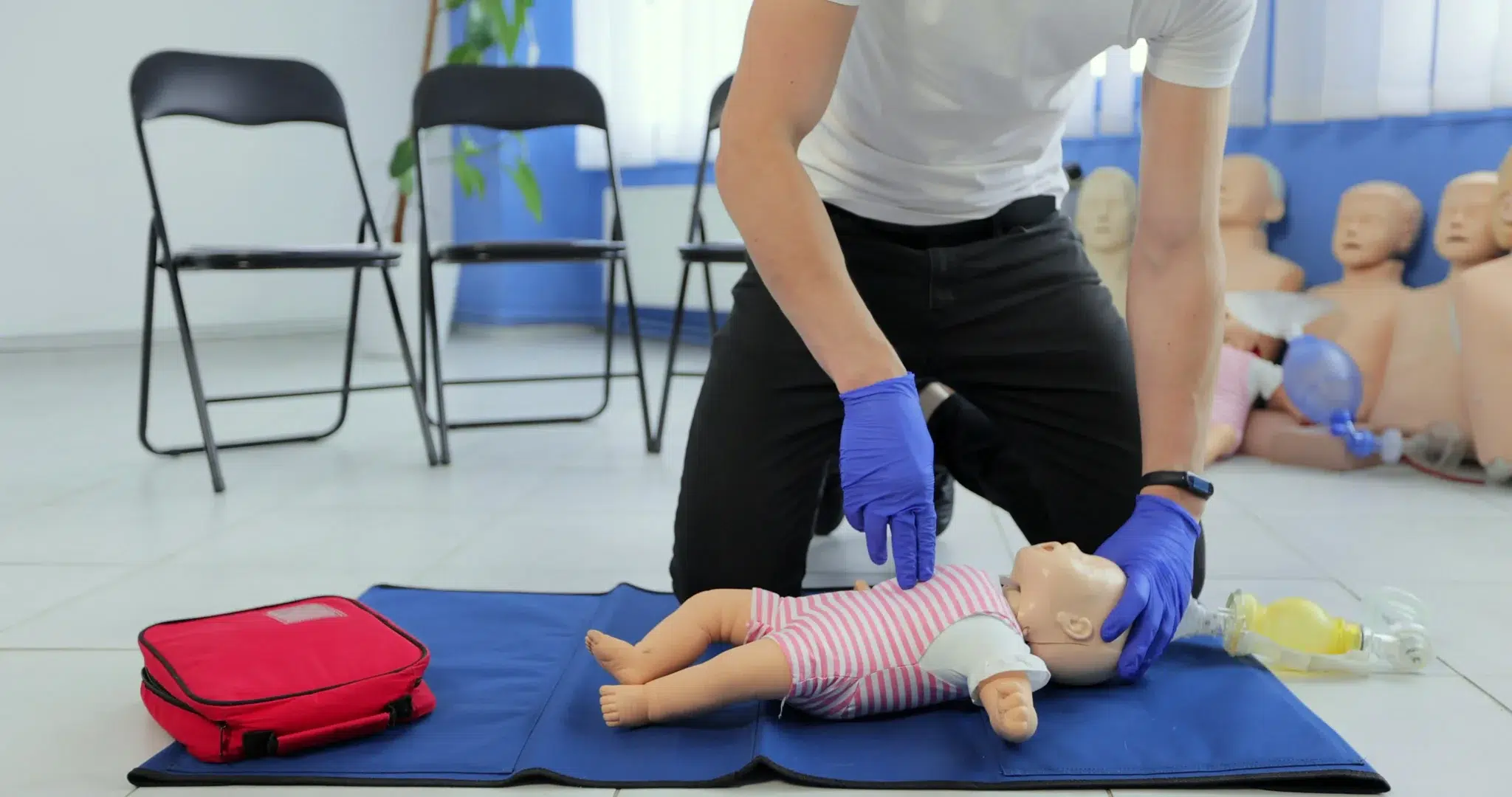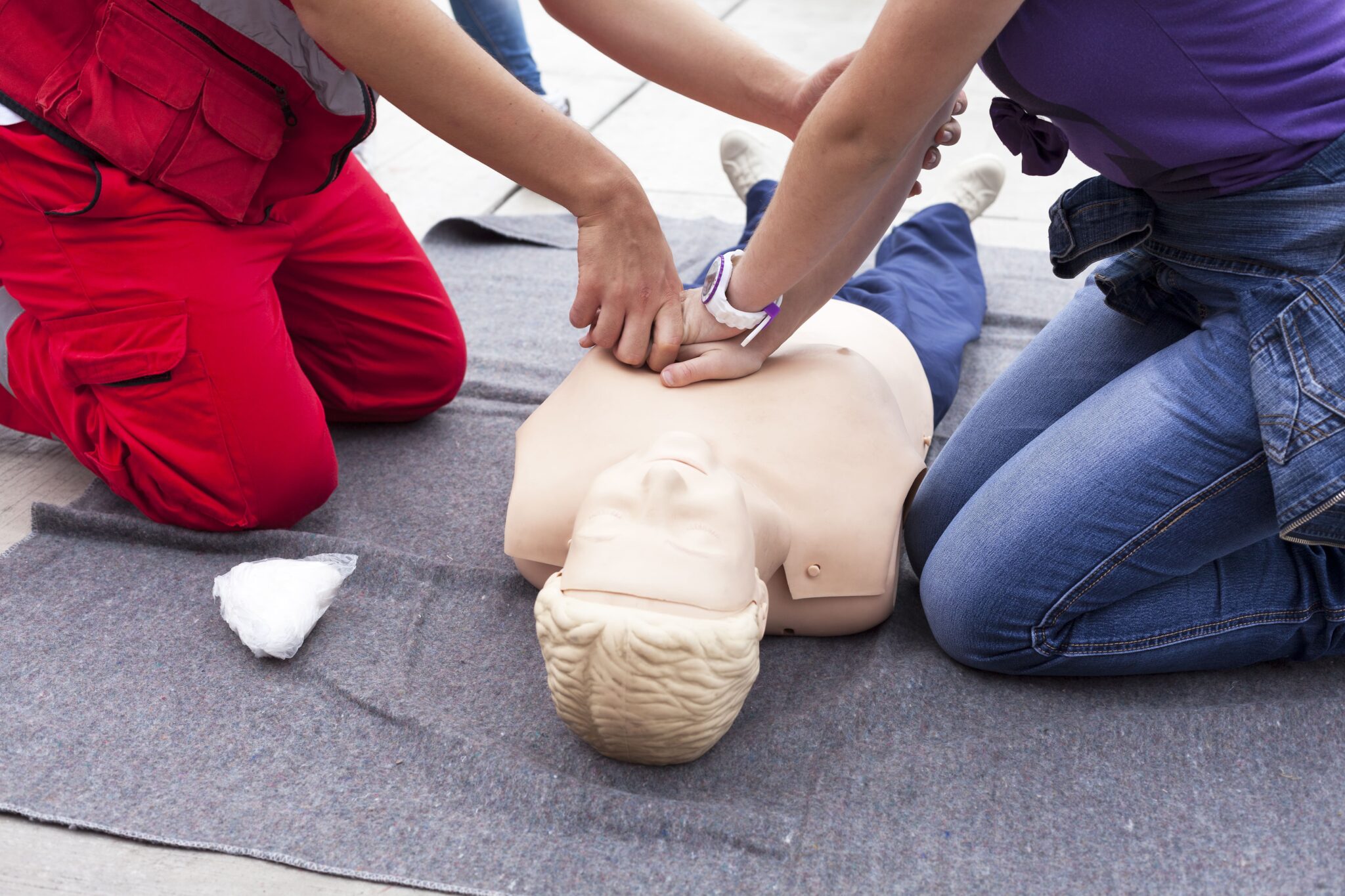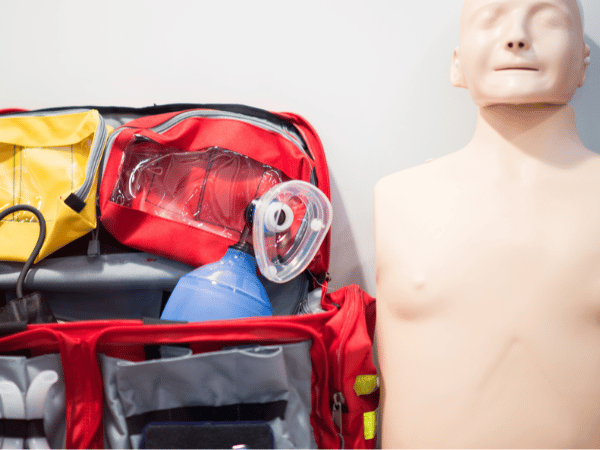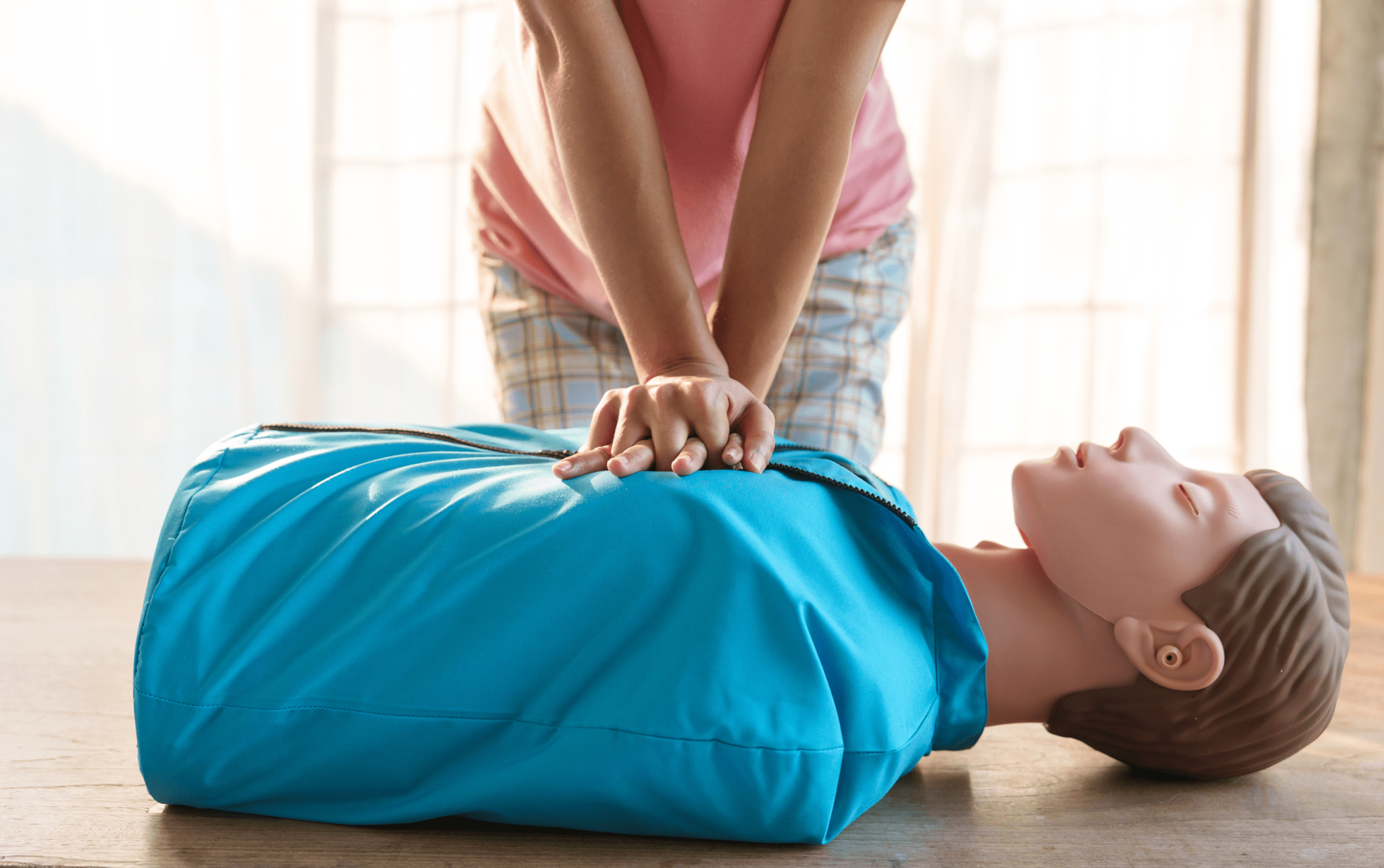A caregiver is helping a client prepare dinner when the client suddenly clutches their chest and collapses. Within seconds, the caregiver must decide: attempt CPR or wait for paramedics to arrive. This decision could mean the difference between life and death.
Home care caregivers face emergencies like this every day. Yet many lack the confidence and skills to respond effectively. This training gap puts vulnerable clients at serious risk and leaves caregivers feeling unprepared.
CPR training isn’t optional for home care workers—it’s essential. This article explores why CPR certification matters for home caregivers, what challenges they face, and how proper training saves lives.
Key Takeaways
- The home care industry experiences high turnover rates exceeding 65% annually, leading to training gaps and caregivers often starting work without comprehensive emergency training, putting clients at risk.
- CPR skills quickly deteriorate without practice, causing hesitation during emergencies. Regular refresher training increases skill retention by up to 60%, ensuring caregivers are prepared to act promptly.
- Generic CPR courses do not address the unique challenges home caregivers face, such as performing CPR in cramped spaces or without advanced equipment. Tailored training for home care scenarios is essential.
- Immediate CPR can significantly increase cardiac arrest survival rates. Quick caregiver response is crucial, especially since paramedics might take longer to arrive in homes, particularly in rural areas.
- Comprehensive CPR training increases job satisfaction and confidence among caregivers, leading to lower turnover rates and improved care for clients. Agencies see improved retention and job performance with proper training investments.
The Challenges Facing Home Care Caregivers
High Turnover Rates
The home care industry continues to struggle with alarmingly high turnover rates. Recent data reveals that turnover rates have hovered around 65.2% annually, and climbed as high as 77% in some years. This consistent churn in staffing leads to training gaps, as new caregivers often begin work before completing comprehensive emergency response training. When experienced caregivers exit their roles, vital knowledge in areas such as CPR and other life-saving skills exits with them, leaving agencies to fill these gaps over and over.
High turnover also impacts the ability to maintain consistent CPR certification across a caregiver workforce. With staff coming and going, some caregivers may work for months without proper emergency response training. This not only increases liability for home care agencies but also creates potential risks for patient safety in emergency situations. Agencies must improve retention strategies to stabilize training costs and maintain a workforce ready to handle emergencies.
Lack of Confidence in CPR Skills
For caregivers, confidence in CPR skills is critical. However, many face a significant challenge due to the rapid deterioration of these skills without consistent practice. Research indicates CPR proficiency fades quickly, with skills dropping by more than 50% within six months after initial training. Without repetitive training sessions, caregivers may hesitate to act during emergencies, delaying potentially life-saving interventions while awaiting professional medical services.
The risks of skill decay extend beyond hesitation. Caregivers unable to meet the demands of an emergency may become overwhelmed or fail to provide effective chest compressions or ventilation. Studies show that regular refresher training could significantly enhance skill retention. For example, refresher training every 6-12 months has demonstrated up to a 60% improvement in retention rates. Unfortunately, many agencies provide CPR training only during orientation, leaving caregivers without the routine updates needed to maintain confidence and readiness.
Limited Access to Affordable and Tailored Training Programs
Most CPR courses target hospital workers or general audiences. These programs don’t address the unique challenges home caregivers face. Hospital-based training assumes access to advanced equipment like defibrillators and oxygen. Home environments rarely have this equipment.
Generic CPR courses also skip home-specific scenarios. They don’t teach caregivers how to perform CPR in cramped bedrooms or how to move furniture quickly. This training gap leaves caregivers unprepared for real-world situations.
Cost presents another barrier. Many caregivers earn modest wages and can’t afford expensive certification programs. Agencies operating on tight budgets may skip comprehensive training to cut costs.
Absence of Clear Home Emergency Protocols
Hospitals have detailed emergency response protocols. Staff know exactly who to call and what steps to follow. Home care lacks these clear guidelines.
Caregivers often face confusing decisions during emergencies. Should they start CPR immediately or call 911 first? How long should they continue CPR? When should they stop?
This uncertainty leads to delayed responses. Caregivers waste precious seconds trying to decide what to do. Clear protocols eliminate this confusion and speed up emergency response.
The Benefits of CPR Training for Caregivers
Increased Skill Retention & Confidence Through Regular Refreshers
Simulation-based CPR training programs boost caregiver response times. These hands-on courses use realistic scenarios that mirror home care situations. Caregivers practice on mannequins while instructors create emergency situations they might actually encounter.
Regular practice builds muscle memory. When real emergencies happen, trained caregivers respond automatically. They don’t waste time trying to remember the correct compression depth or hand placement.
Confident caregivers also communicate better with emergency dispatchers. They can clearly describe the situation and follow dispatcher instructions while continuing CPR.
Improved Emergency Outcomes
Effective CPR can double or triple cardiac arrest survival rates. Brain damage begins within four minutes of cardiac arrest. Paramedics often take longer than this to arrive at homes, especially in rural areas.
Immediate CPR maintains blood flow to vital organs. It keeps the brain and heart functioning until advanced medical help arrives. Every minute of delay reduces survival chances by 10%.
Home care clients face higher emergency risks than the general population. Many have chronic conditions like heart disease or diabetes. Quick caregiver response can mean the difference between full recovery and permanent disability.
Job Satisfaction and Reduced Turnover
Comprehensive training programs show caregivers that their employers value them. Workers who feel prepared and confident experience less job-related stress. This improved job satisfaction translates into lower turnover rates. Reduced turnover saves agencies money on recruitment and training costs.
Confident caregivers also provide better overall care. They feel empowered to handle various situations, not just emergencies. This confidence improves client relationships and job performance.
Tailored Training for Home Settings
Home care emergencies are unpredictable and varied. Clients may collapse in bathrooms, bedrooms, or kitchens. Each location presents unique challenges for emergency response.
Specialized programs like those offered by Safety Training Seminars focus on real-world home scenarios. Caregivers learn how to perform CPR in tight spaces and how to quickly clear obstacles. They practice moving clients safely and efficiently.
Home-specific training also covers common household emergencies. Caregivers learn to handle choking incidents, falls, and medication reactions. This comprehensive approach prepares them for the full range of situations they might encounter.
How to Address the Challenges in Caregiver CPR Training
Make CPR Training Mandatory for All New Hires
Every new caregiver should complete CPR certification before starting work. This standardized approach ensures consistent skill levels across the workforce. Safety Training Seminars offers American Heart Association-recognized programs that meet professional standards.
Mandatory training eliminates the excuse that there wasn’t time for proper preparation. It also demonstrates to clients that the agency prioritizes safety and emergency preparedness.
New hire training should include both online coursework and hands-on practice. The combination ensures caregivers understand both the theory and practical application of CPR techniques.
Provide Regular Refreshers
CPR skills require regular maintenance. Caregivers should complete refresher training every 6-12 months. These sessions should include scenario-based drills that simulate real home emergencies.
Regular refreshers help caregivers stay current with updated CPR guidelines. The American Heart Association periodically revises its recommendations based on new research. Ongoing training ensures caregivers use the most effective techniques.
Short, frequent training sessions work better than long annual courses. Thirty-minute quarterly reviews maintain skills more effectively than three-hour yearly sessions.
Ensure Convenience and Affordability
Training programs must fit caregivers’ busy schedules. Many work multiple jobs or have family obligations that limit their availability. Flexible scheduling makes training accessible to more workers.
Safety Training Seminars addresses this need by offering classes daily across 70+ California locations. Their online coursework takes just 1-2 hours, followed by a 30-minute skills test. This efficient format minimizes time away from work.
Affordable pricing removes financial barriers to certification. When agencies invest in training costs, they demonstrate commitment to their workforce. This investment pays dividends through improved retention and better care outcomes.
Develop Home-Specific Emergency Protocols
Training should include clear, step-by-step emergency protocols tailored to home environments. Caregivers need to know exactly what to do when emergencies arise.
Protocols should cover common scenarios like choking, falls resulting in unconsciousness, and heart attacks. Each protocol should specify when to start CPR, when to call 911, and how to communicate effectively with emergency dispatchers.
Role-playing exercises help caregivers practice these protocols. They learn to make quick decisions under pressure and coordinate multiple actions simultaneously.
Steps to Becoming CPR Certified with Safety Training Seminars
Enroll in a Certified Course
Safety Training Seminars operates as an official American Heart Association Training Center. They offer CPR courses through 70+ locations across Northern California. Their daily class schedule accommodates various work schedules.
Registration is quick and straightforward. Caregivers can choose from multiple locations and time slots to find options that work with their schedules.
Online Learning & Hands-On Skills Testing
The certification process combines online learning with practical skills assessment. Students complete the American Heart Association online course in 1-2 hours at their own pace. This flexible approach allows learning around work and family commitments.
After completing online coursework, students attend a 30-minute hands-on skills test. Certified instructors evaluate proper CPR technique using advanced training mannequins. This practical assessment ensures students can perform CPR correctly in real situations.
Receive Certification the Same Day
Students receive their official American Heart Association certification card immediately after passing the skills test. This same-day service eliminates waiting periods and allows caregivers to start work without delays.
The certification remains valid for two years. Safety Training Seminars sends renewal reminders to help caregivers maintain current certification status.
How to Choose the Right CPR Training Program
Verify Certification Credentials
Only choose programs certified by recognized organizations like the American Heart Association or Red Cross. These organizations maintain strict training standards and regularly update their curricula based on current medical research.
Fraudulent CPR programs have increased significantly in recent years. These programs issue worthless certificates that employers and regulatory agencies don’t recognize. Safety Training Seminars provides a fraud alert checklist to help identify legitimate training providers.
Always verify that training centers hold current certification from recognized organizations. Check their credentials directly with the certifying body if you have any doubts.
Look for Experienced Instructors and Quality Facilities
Choose programs with experienced instructors who understand home care environments. These instructors can provide relevant examples and answer specific questions about home-based emergencies.
Quality training facilities should have modern equipment and adequate space for hands-on practice. State-of-the-art mannequins provide realistic training experiences that build confidence.
Safety Training Seminars maintains excellent facilities with advanced training equipment. Their thousands of positive reviews demonstrate consistent quality and customer satisfaction.
Consider Program Flexibility and Support
Select programs that offer flexible scheduling and ongoing support. Good training providers understand that caregivers have demanding schedules and varying learning needs.
Look for programs that provide additional resources like reference materials or refresher opportunities. This ongoing support helps maintain skills between formal training sessions.
Investing in Life-Saving Skills
CPR training transforms home care caregivers from anxious bystanders into confident first responders. When emergencies strike, trained caregivers can take immediate action while emergency services are en route.
The investment in proper CPR training pays dividends through improved client outcomes, reduced caregiver anxiety, and lower staff turnover. Agencies that prioritize comprehensive emergency training demonstrate their commitment to both client safety and worker development.
Home care clients deserve caregivers who can respond effectively to medical emergencies. CPR certification provides the skills and confidence necessary to save lives when every second counts.
Take action today—equip yourself with life-saving skills. Book a CPR class with Safety Training Seminars now!








